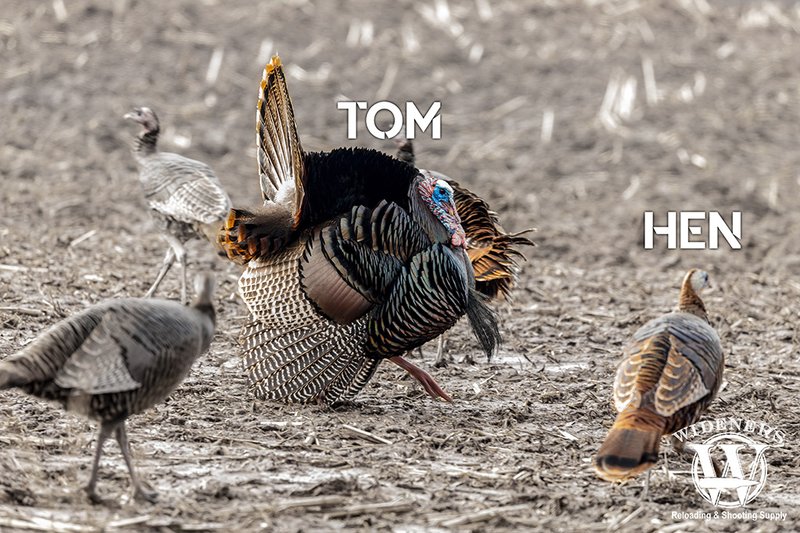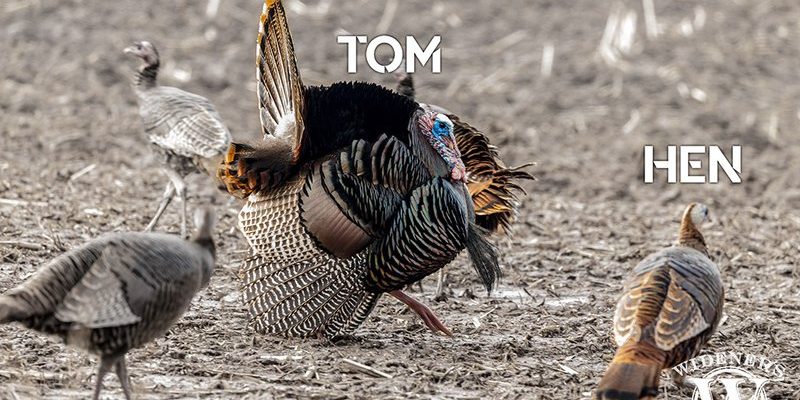
Identifying wild turkeys isn’t just about spotting a bird with a wattle. It involves understanding their habits, sounds, and the environments they thrive in. Picture this: you’re sipping coffee, peering through binoculars at a bushy area, and suddenly, you catch a glimpse of movement. Is it a turkey? Let’s unpack the clues and tricks that can help you become a turkey-spotting pro.
Understanding Turkey Types
Before diving into the nitty-gritty of spotting turkeys, it’s helpful to know the main types you might encounter. In North America, the most common wild turkey is the Eastern Wild Turkey, but there are also Merriam’s, Rio Grande, and Osceola turkeys.
Eastern Wild Turkey
This type is often found in the eastern U.S. and is known for its vibrant plumage, with a deep bronze sheen. They tend to be quite social and can often be spotted in flocks.
Merriam’s Wild Turkey
Typically found in the western U.S., these birds are recognized by their lighter feathers and more pronounced white tips on their tail feathers. They prefer mountainous regions and can sometimes be found in coniferous forests.
Rio Grande Wild Turkey
As the name suggests, this turkey is primarily located in the central and southwestern U.S. They have a distinct appearance, with longer legs and a more elongated body, suited for open plains.
Understanding these differences helps shape your expectations for what you might see on your adventure.
Turkey Behavior: What to Look For
Turkeys have unique behaviors that can guide you in identifying them in the wild. They’re often seen scratching the ground, looking for seeds or insects. This behavior is key—in fact, if you see a group of birds bustling around on the forest floor, there’s a good chance they might be wild turkeys!
Another notable behavior is their social nature. During the mating season, males (gobblers) are known for their loud, distinctive calls. You might hear a deep “gobble-gobble” echoing through the trees. This sound isn’t just for show; it’s a way for males to attract females and assert dominance within their group.
In addition to this, look for flocks. Wild turkeys often travel in groups, especially during non-mating seasons. Spotting a lone turkey is rare, so if you see one, keep your eyes peeled for others nearby.
Physical Features to Identify Turkeys
When it comes to identifying turkeys, their physical features are essential. Turkeys have a unique appearance that can help you distinguish them from other birds. Here are some key traits:
- Body Shape: Turkeys have a distinct, broad body and significant size, often weighing between 5.5 to 24 pounds, depending on the species.
- Feather Colors: Look for glossy, iridescent feathers. Male turkeys typically have darker, more vibrant feathers, while females are usually more muted in color.
- Wattle and Snood: Notice the fleshy wattle that hangs from a male’s neck and the snood, which is a flap of skin that hangs over the beak. These features are prominent during mating seasons.
These distinguishing characteristics not only help in identification but also provide insight into their behavior and health.
Turkey Habitats: Where to Find Them
Turkeys are versatile and can thrive in various habitats, but they do have preferences. They usually inhabit areas with a mix of woodlands, fields, and open areas. So, if you’re exploring a forest, keep this in mind.
You might find them in:
- Forests: They often prefer deciduous woods with open understories, where they can forage for food.
- Fields and Pastures: Turkeys love open space to roam, especially in the early morning or late afternoon when they go out to feed.
- Near Water Sources: They are often found near streams or ponds, as these areas provide watering spots and food sources.
Taking note of these habitats can increase your chances of spotting a turkey.
Listening for Turkey Sounds
Sound is a huge part of identifying wild turkeys. They communicate through various calls, each with its own meaning.
The most recognizable sound is the gobble, typically made by male turkeys during the mating season. However, they also produce softer clucks, purrs, and yelps. Each sound serves its purpose, often related to social interactions or alerts to danger.
When you’re out looking for turkeys, listening closely can give you a heads-up about their presence. If you hear a series of soft clucks, it could indicate a group of females. If you hear a loud gobble, you might want to look for a male trying to attract attention.
Tips for Successful Turkey Spotting
If you’re eager to spot wild turkeys, a few tips can enhance your chances:
- Be Patient: Wildlife watching takes time. Find a comfortable spot and stay quiet. Turkeys can be skittish, so minimize movement.
- Use Binoculars: A good pair of binoculars can make a world of difference. They allow you to observe turkeys from a distance without startling them.
- Choose the Right Time: Early mornings or late afternoons are the best times for turkey sightings. This is when they’re most active.
By applying these strategies, you’ll find your turkey-spotting experience much more enjoyable.
Identifying a turkey in the wild can be a rewarding experience. With a little knowledge about their types, behaviors, and habitats, you’re well on your way to spotting these incredible birds. So, grab those binoculars, choose a peaceful spot, and immerse yourself in the beauty of nature.
Whether you’re a seasoned birdwatcher or a curious beginner, finding wild turkeys is not just about the sighting. It’s about appreciating the thrill of the hunt and the wonders of wildlife. Enjoy the adventure in the great outdoors—you never know what you might discover!

